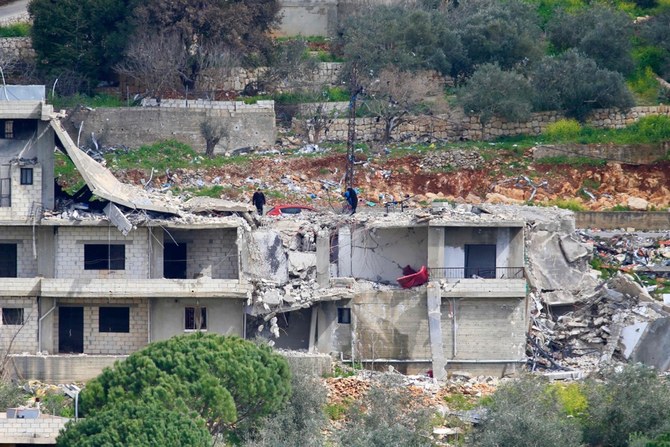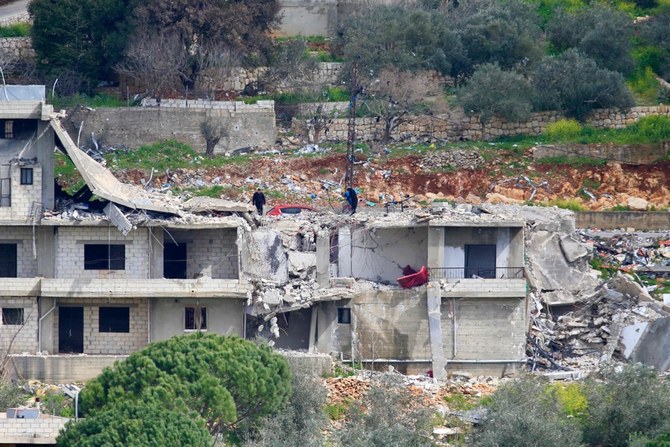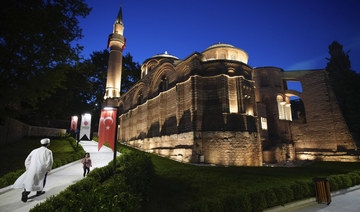BEIRUT: Political efforts are intensifying to prevent further escalation of the violence in southern Lebanon amid growing opposition among Christians to the confrontation leading to open war.
The fear of escalation has increased due to the involvement of Hezbollah in the conflict in the Gaza Strip, as well as the instability caused by the presidential vacuum in Lebanon.
There are growing calls to peacefully resolve the situation in southern Lebanon and avoid further violence.
The most prominent of these came from the Council of Maronite Bishops, which announced its “categorical refusal of dragging Lebanon into the Palestinian-Israeli war, from the flames of which all Arab countries have distanced themselves.”
The bishops expressed their concern about “any Lebanese negotiations moving forward regarding the situation in the south without the presence of a president who has the authority to deal with this issue.”
A delegation of Hezbollah MPs met former Lebanese President Michel Aoun on Thursday after political tension between the two parties had continued for months.
MP Mohammed Raad, head of the Hezbollah parliamentary bloc, said that Aoun “was briefed on the exact and objective situation on the ground, and we expressed our keenness to reinforce national unity in the face of Israel’s challenge.
“We need to show our good intentions and insist on responsible communication between all groups and those concerned about this country so we can ultimately solve the main issues we are facing,” he said.
In a statement, the Free Patriotic Movement — founded by Michel Aoun — feared “linking the presidential election to the war in Gaza.”
The party also expressed concern over “some people’s actual intentions to compromise the partnership, stall the process of electing a president, and govern the country without him (the president), therefore excluding Christians from the governance.”
Several MPs representing Christian parliamentary blocs told US envoy Amos Hochstein, who met them at the Parliament on Monday night, that they disagreed with “the division of the contents of Resolution 1701 as a fundamental issue and refuse to have the internal presidential elections affected by the war in the Gaza Strip or any other detail.”
They also said that “external support should be limited to preventing non-Lebanese interventions in the elections.”
Meanwhile, Lebanese civil defense teams found the remains of a young Lebanese civilian on Thursday morning. Rabih Al-Yassin, 25, was at his house in the southern border town of Dhayra on Wednesday night when an Israeli airstrike hit the residential home.
The rescue team had previously found no trace of him after long hours of lifting rubble during the night. The team found his remains on Thursday morning. Al-Yassin was laid to rest by residents.
Israeli bombing — which uses highly destructive weapons — killed dozens of Hezbollah members as well as civilians. Their bodies were recovered from under the rubble of buildings and in nearby fields.
On Thursday, Hezbollah announced “the targeting of the Afdoun settlement with Katyusha rockets in response to the enemy’s attacks on the town of Dhayra and the death of a citizen there.”
The tension along the southern front eased as confrontations between Hezbollah and the Israeli army entered their sixth month. Complex negotiations aimed at reaching a ceasefire in the Gaza Strip before Ramadan are underway, and Hezbollah is counting on the ceasefire covering south Lebanon as well.
The Israeli army — for the second time in two days — directed gunfire at the outskirts of the agricultural area of Wazzani to intimidate farmers.
Israeli shelling also targeted the outskirts of Naqoura, Alma Al-Shaab and Yaroun in the Bint Jbeil District, along with some neighborhoods in Kfar Kila and fields in the Marjayoun Plain.
Israeli warplanes bombed the towns of Aitaroun and Aita Al-Shaab.
Israel’s Channel 12 reported that the army bombed Hezbollah military buildings in Aitaroun and Aita Al-Shaab.
Hezbollah targeted the Israeli military site of Zabdin and said in a statement that it was “a direct hit.”
It also targeted “a newly established command headquarters for the sector in Liman with artillery shells and directly hit it” and targeted the “Al-Zaoura position with rockets,” it said.

























